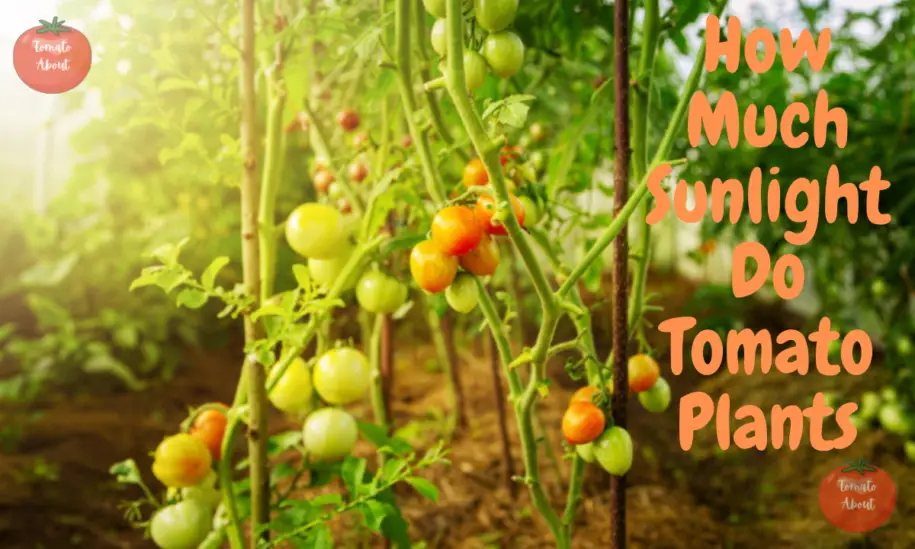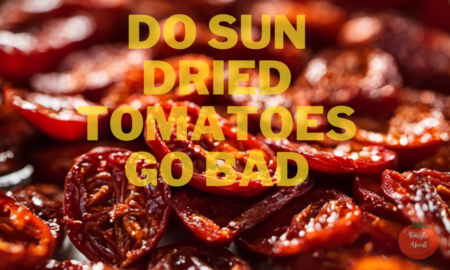Key Takeaways
- Tomatoes require a minimum of 6 hours of direct sunlight daily, with 8-12 hours being ideal for optimal yield.
- South-facing planting sites are best for ensuring sufficient sunlight exposure throughout the day.
- Sunlight fuels photosynthesis, enabling tomatoes to grow strong, develop robust root systems, produce abundant blossoms and fruit, and yield high-quality harvests.
- Different stages of tomato growth, from seedlings to fruit ripening, have specific sunlight requirements for optimal results.
- Tomato varieties have varying sunlight needs, and it’s crucial to match the variety with the available sunlight conditions.
Juicy, vine-ripened tomatoes are one of summer’s greatest pleasures. But achieving tomato greatness in your own garden requires meeting these sun-loving plants’ light demands.
In this complete guide, we’ll explore everything about sunlight requirements for tomatoes. You’ll learn how much sun tomato plants need, which exposure times are best, strategies for lighting challenging growing sites, and how to choose optimum planting locations.
Whether you’re cultivating in a cramped container or a sprawling vegetable patch, proper sunlight is the key to robust tomato plants and impressive harvests. Read on to discover the light-giving secrets of successful tomato gardeners.
A Quick Sunlight Primer for Tomatoes
Before we dive further, here’s a quick overview of tomatoes’ sun requirements:
- Tomatoes need a minimum of 6 hours of direct sunlight daily, but 8-12 hours is best for maximum yield.
- South-facing planting sites are ideal for ensuring sufficient sun exposure throughout the day.
- Morning sun is essential. Afternoon shade can benefit plants in hot climates, but tomatoes rarely get too much sunlight overall.
- Tomatoes will still grow with as little as 4 hours of sun, but plants will be stunted and yields poor.
- Strategies like elevated containers, moving plants, and grow lights can supplement sunlight in shady spots. But avoiding shade altogether is better.
Now let’s explore why sunlight is so crucial for thriving, productive tomato plants.
Why Tomato Plants Need Sunlight
Tomatoes originated in sunny South America and are used to basking in bright light all day long. Like most crops, tomatoes are heavy feeders that rely on photosynthesis. Converting sunlight into energy fuels strong vegetative growth, expansive root systems, and a robust framework to support fruit production.
With ample sunlight, tomato plants manufacture the carbohydrates and energy needed for:
- Abundant leaf and stem growth
- Large, healthy root structures
- Numerous blossoms and pollinated flowers
- Fruit bulking and ripening
- High yields per plant
Therefore, insufficient sunlight starves plants of the power source driving optimal performance. Tomato plants lacking adequate sunlight will suffer poorer health and reduced yields.
How Sunlight Affects Each Stage of Tomato Growth
Now that we’ve covered the basics, let’s take a closer look at how sunlight impacts key stages of the tomato growth cycle. Understanding the sun’s needs at different times helps you manage your crop for maximum success.
Seedling Stage
Once tomato seeds germinate, the seedlings require 8-10 hours of sunlight or supplemental lighting daily. This jumpstarts photosynthesis and growth. Insufficient light leads to weak, leggy seedlings prone to disease.
Provide bright light but avoid scorching direct sun at first. An east-facing window is perfect for starting seeds indoors. Or set up LED grow lights 4-6 inches above seedlings, adjusting the height as plants grow.
Transplanting and Establishment
When transplanting tomato seedlings into the garden, look for a site with morning sun but afternoon shade. Let plants establish and adjust to sunlight for a week or two before exposing them to the full force of midday sun.
Vegetative Stage
As plants grow and produce new leaves and stems, they have high sunlight needs. Tomato plants require at least 8 hours of direct sun during this active growth period for strong photosynthesis and plant vigor.
Staking and pruning are important at this stage to open up the plant canopy so light penetrates to lower leaves and branches. Remove any nearby weeds or crops that could shade tomatoes.
Flowering
Once tomato plants begin forming flowers and fruit, aim for at least 10-12 hours of sunlight if possible. This helps ensure adequate fruit set and development.
Tomatoes abort blossoms or produce misshapen fruit when sunlight is insufficient during flowering and fruiting. Again, staking and pruning improve light interception.
Fruit Ripening
Maximum sun exposure is ideal as the fruit ripens. The more hours of sunlight tomatoes get now, the sweeter and more flavorful the tomatoes will become. Twelve hours a day or more gives you the best quality.
However, too much hot sun can crack and blister ripening fruit. Light shade in peak afternoons helps prevent damage to your precious crop.
End of Season
As daylight hours shorten in fall, reduce irrigation and fertilization so plants aren’t stimulated to produce more fruit than they can ripen. Focus late-season sun on maturing existing fruits.
How Much Sunlight Do Tomato Plants Need?
Now that we know why the sun is important, exactly how much sunlight is needed? Below are general guidelines for optimal tomato growth:
- Full sun – 10-12 hours of direct sun daily
- Partial sun – 6-8 hours of direct sun daily
- Minimal sun – At least 4-6 hours of direct sun daily
Full sun is ideal for maximum tomato production. Tomatoes thrive best with sun exposure from morning to evening.
Partial sun, approximately 6-8 hours, is usually sufficient for reasonably healthy plants and decent yields. just expect somewhat smaller, later harvests compared to full sun.
With less than 6 hours of sun per day, tomatoes struggle. Technically tomato plants grow with just 4 hours of sunlight, but yields plummet rapidly under this minimum threshold.
Tomatoes living on the edge with barely 4 hours of sun will be scraggly, stunted, disease-prone, and unlikely to produce much useable fruit before frost.
Morning vs. Afternoon Sun for Tomato Plants
Ideally, tomato plants receive sun from sunrise to sunset. But if forced to pick between morning and afternoon light, tomatoes tend to favor AM sun.
In general, aim for sun exposure spread out over the entire day. But here are the benefits morning sunlight offers:
- Photosynthesis is more efficient in cooler morning temperatures.
- Morning sun helps dry dew off foliage, reducing disease risk.
- Tomato flowers open and pollination occurs in the morning hours.
- Hot afternoon light can stress plants, especially in warm climates. Some midday shade is occasionally beneficial.
During peak summer, relentless afternoon sun combined with high temperatures does tax tomatoes. A bit of shade between 1-4 p.m. may improve growth for plants in zones 8-10+.
But morning light should never be sacrificed. And in most regions, tomatoes tolerate long days of sun just fine when properly irrigated and mulched.
Can You Grow Tomato Plants in the Shade?
This depends on just how shady the space is. With 4-6 hours of sunlight, tomatoes grow but perform poorly. But in truly dark spaces, attempting tomatoes wastes time and money.
Heavy shade suppresses tomato growth. Common problems facing shade-grown tomatoes include:
- Extremely stunted, sparse vegetation
- Tiny, low-yielding plants
- Pale leaves and weak stems
- Delayed flowering and fruiting
- Pitiful tomato harvests
- Vulnerability to disease
These issues arise because shaded plants lack photosynthetic fuel for robust growth. Weakened plants also become attractive targets for diseases like blight and wilt.
So while tomatoes technically grow in shade, success is unlikely. For gardeners working with heavily obstructed sites, focus on shade-tolerant crops like lettuce, kale, spinach, chard, and herbs. Leave the sun-worshiping tomatoes for brighter spots.
Here is the table on sun requirements for different tomato varieties:
| Tomato Variety | Sun Requirement |
|---|---|
| Cherry Tomatoes | 12 hours daily |
| Paste Tomatoes | 10 hours daily |
| Slicing Tomatoes | 8-10 hours daily |
| Heirloom Tomatoes | 6-8+ hours daily |
| Small-fruited Tomatoes | 4-6 hours daily |
| Determinate Tomatoes | 6+ hours daily |
Strategies for Lighting Shaded Tomato Sites
But what if a shaded space is your only option? With creativity and care, tomatoes can fruit in challenging lighting conditions:
- Try “determinate” or “patio” type tomatoes – These compact varieties need less foliage and smaller root systems, adapting better to confinement and poorer light.
- Use hanging baskets – Elevate pots into sunnier spots out of shade below. Train vines so foliage spills outside of shadows.
- Prune/train plants toward the light – Keep just a few steam and train/tie them toward sunlight if possible.
- Use reflective mulch – Aluminum foil, white plastic sheeting, and metal paint reflect sunlight up to plants.
- Add supplemental lighting – Hang grow lights or position artificial light sources to provide extra illumination on foliage.
- Move plants seasonally – Cater to the sun’s shifting path by moving plants to follow light over time.
- Container gardening makes relocating and elevating plants for better light simple. Even large plants in beds can be progressively shifted toward light as stems lengthen.
While less than ideal, with persistence and care it is possible to coax some tomatoes from surprisingly shaded situations. But avoid very heavy shade altogether.
Choosing the Best Tomato Planting Locations
Since sufficient sunlight fuels successful tomatoes, site selection is critical. Use these tips when scouting the best planting sites:
- Prioritize south-facing spaces – In the northern hemisphere, south-facing exposures receive the most direct sunlight throughout the day.
- Check for obstructions – Trees, buildings, and other structures can cast shade. Watch for changes in sunlight over the course of the day.
- Maximize planting bed exposure – Position tomato beds perpendicular to any fences or walls to prevent shading.
- Space plants generously – Allow adequate room between plants to prevent self-shading. Cages and trellises also boost exposure.
- Monitor sunlight hours – Avoid spots getting less than 6 hours of sun daily for best results. More is better.
- Supplement if needed – In marginal spaces, hang reflective mulch, whitewash walls, or employ grow lights to amplify sunlight.
Signs Your Tomato Plants Aren’t Getting Enough Sun
Keep an eye on plants to spot signals that sunlight is lacking:
- Sparse, weak growth – Inadequate photosynthesis prevents lush, vigorous growth. Plants remain stunted.
- Small leaves – Shaded leaves don’t expand to full size without enough light fueling growth.
- Spindly stems – Weak, stretchy stems attempt to reach for additional sunlight.
- Flowers not setting fruit – Insufficient sunlight impairs pollination and fruit formation.
- Low yields – Few fruits form and mature without ample photosynthetic energy.
- Small tomatoes – Fruits don’t bulk up and ripen properly in shade.
- Late harvests – Shortened light exposure delays flowering and fruiting.
- Disease susceptibility – Weakened plants become targets for pathogens like blight.
If your tomatoes show these warning signs, take action to improve sunlight. Relocating plants, adding mulch and grow lights, or removing obstructions can all rapidly boost growth and fruiting.
Special Considerations for Greenhouses and Hoop Houses
Growing tomatoes under cover provides protection from weather, but the light needs consideration:
- Site hoop houses running north to south. This maximizes sun penetration through the sides all day long.
- Use translucent poly coverings. Transparent plastic films diffuse sunlight too much. Opt for poly with 85-90% light transmission.
- Whitewash or paint the interior. Bright white surfaces reflect sunlight onto plants. Increase light diffusion and intensity with white hoop house walls.
- Ventilate on sunny days. Prevent excessive heat buildup and vent hot air to avoid stressing plants.
- Add shade cloth if needed. On hot days, a partial shade cloth helps lower temperatures and prevent leaf scorch.
With smart setups, hoop houses and greenhouses harness the sun’s potential for maximum tomato returns.
Wrapping up
Like all plants, tomatoes are highly dependent on sunlight. This star ingredient drives photosynthesis, fruiting and productive harvests.
Understanding optimal sun requirements allows you to select suitable tomato varieties for your growing conditions. Seek out the sunniest spaces when siting your tomato garden.
Pay close attention to sunlight levels at all stages of tomato growth. Adjust staking, pruning, watering and other care practices to balance sun availability and plant needs.
While tomatoes love sun, too much intense light can stress plants and damage fruits. Make strategic use of shade, reflectors and other sunlight control techniques as needed.
Most importantly, don’t underestimate the power of sunlight. Provide tomatoes with adequate sun for a bountiful crop of vibrant, delicious fruits!



